The Japanese Tea Ceremony (Chado): A Whole World Behind the Enjoyment of Matcha
-eine-ganze-welt-hinter-dem-matcha-genuss.jpg)
In Japan, tea is much more than just a beverage. It represents an entire culture and has influenced art and architecture for centuries. Those who follow the "way of tea" are not only given a long, healthy life, but also the wisdom of generations.
From samurai pastime to lifestyle
The ceremony known as Cha-no-ya originated in the ninth century when tea was introduced to Japan from China by a Buddhist monk. The first tea prepared in Japan was Sencha, refreshing and light with golden-green leaves, and today it is the most widely consumed variety of green tea. It wasn't until the twelfth century that Matcha tea was discovered. This tea is largely unprocessed and retains the bold flavor of the ground tea leaves, giving it a natural and distinctive taste. Samurai soon began preparing Matcha, gradually forming the cultural heritage we now know as the tea ceremony.
Until the 16th century, this tea enjoyment was reserved for the higher classes. Today, Japanese plantations offer a wide selection of green tea for everyone, which can vary greatly depending on the season. For those who like it exotic, they can try Gyokuro, which, like Matcha, grows shaded by bamboo mats. This high-quality variety has a spicy umami flavor with a sweet note and is the most expensive Japanese tea. The same ingredients that define its quality also make it a very healthy indulgence.
But not only the variety, but also the concentration of green tea differs in the tea ceremony. Two different types are served: The thick Koicha and the thin Usucha. The consistency of Koicha is almost paste-like, and each participant only takes a few sips from the bowl – or rather, eats. It is not served at every ceremony.
For Samurai, visiting a tea house in their leisure time was popular even before schools of the tea ceremony with their own rules were established. However, this complex and diverse custom is much more than just a ritual sequence of movements. The "way of tea," known as Chado, is based on an entire philosophy. Although the process is subject to strict rules, different variations have developed depending on the school: From the position of the tea house to the materials used for the utensils to the preparation of the tea. However, they all have one thing in common: aesthetics and the values of Zen Buddhism reign here. The influential tea master Sen no Rikyu established a guide in the 16th century, which most schools still adhere to today. He was also the one who defined the four fundamental principles of Chado: Purity, Silence, Respect, and Harmony.
Purity - inside and out
Guests of a tea ceremony follow a path through the garden to the entrance of the tea house. Until the host invites the participants inside, they must wait outside on a waiting bench. During the waiting time before the tea ceremony begins, they often receive a light appetizer, accompanied by sake.
Once the copper gong rings five times, one by one, they enter the room lined with tatami mats – but not without first washing their hands at the entrance. Purity in the right places is one of the cornerstones of Japanese culture and provides the opportunity to leave behind one's misdeeds and thoughts at the threshold. The utensils and equipment are also cleaned before and during the preparation.
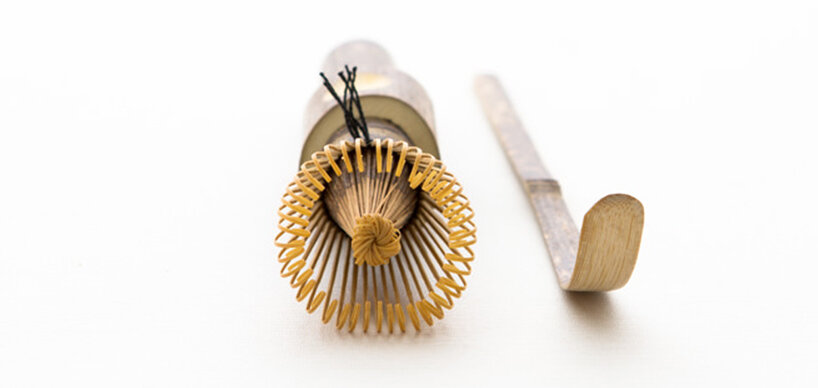
The key components include the container for loose tea, the fresh water vessel, and the iron kettle in which the tea is heated. Additionally, there are the scoop and the bamboo whisk (Chasen), used to froth the Matcha.
Other types of tea can be served from a small pot called Kyusu, which can be made of either clay or porcelain. It is a teapot with a side handle and built-in strainer, allowing for convenient and clean pouring. Completing the Japanese tea service is an intricately designed bowl from which guests will later drink. For each type of tea, there is a different tea set, whose size and shape are best suited for the specific preparation. The highly esteemed Japanese ceramics derive their aesthetics from artistic simplicity, emphasizing the sense of authenticity in the tea ceremony. Every tea master has their own collection, which they often must work on throughout their lifetime. Presenting and admiring the most valuable and rare tea sets is an essential part of a tea ceremony.
Silence - finding yourself
The last guest to enter the tea room closes the door with an audible sound, signaling to the host that they may begin. Greeting formulas and bowing exchanges take place. Now, all guests sit on their knees and observe the host carefully manipulating all the utensils, seemingly performing magic with such fluid and meditative movements. Through years of training, the host has internalized the procedures, encompassing all traditional arts from Kimono to flower arranging to incense. All of this is part of the aesthetics of a tea house and allows for a sensory experience.
Aside from formal phrases exchanged between guests and the tea master, no speaking occurs during a tea ceremony. It used to be different when samurai engaged in discussions in the tea room and did not hesitate to express their opinions, even to higher-ranking warriors. Just as the sword was left at the entrance in those times, social differences disappear in the tea room. This has remained unchanged to this day, with the tea ceremony now serving as an opportunity for inner reflection, akin to meditation, rather than a forum for conversation.
Respect - Every guest counts
Although everyone participating in a tea ceremony has a certain rank determining their seating arrangement and task, it is not based on their societal status but rather on their experience with the ritual. Apart from that, there are no hierarchies in the tea house: all are equal and form a whole, symbolized by their humble kneeling. The small size of the tea house also contributes to the absence of social differences here.
A smaller tea ceremony is conducted with four to five participants. The guest of honor engages in polite conversation with the tea master. Once the tea is ready, he is served the tea bowl first. He apologizes to the second guest for making them wait before taking a few sips. He compliments the host on the delicious tea and beautiful tea set, then returns the bowl to him. The tea master wipes it with a specially folded silk cloth – a purely symbolic gesture – before pouring fresh water into it with a ladle and mixing the Matcha. Then he passes the bowl to the next guest, and the same procedure continues around the circle.
Concluding the ceremony is also the responsibility of the first guest, signaling to the tea master that everyone has had enough. The gathering is disbanded after about four hours. It becomes evident: to participate in a traditional tea ceremony, specific knowledge and experience are required. Even holding the tea bowl correctly is subject to certain rules.
However, it is worthwhile to attend a tea ceremony multiple times and experience different types. Tea houses worldwide offer insight into the process of a tea ceremony and initiate students into the art of the tea master. There is a variant for morning, noon, early evening, and late evening. Each of these types offers a different experience, whether it's the first rays of sunlight flooding the room or candlelight bathing the tea house in mystical light.
Harmony - In harmony with nature
Seasons also play a significant role in the nature-oriented Japanese culture, determining the style of the tea ceremony. Whether it's the leaves shining in colors outside or the cherry blossoms blooming, one can recognize, among other things, the delicacies served with Matcha tea. Before drinking can commence, these must first be tasted to, among other things, soften the bitter taste. The homemade sweets come in various varieties and are adapted to the respective colors of the season: in autumn, they are predominantly brown, while in spring, light green or pink tones are preferred.
Depending on the season, the preparation method of Matcha also changes: In the colder months, the tea water is boiled over a fire pit set into the ground. This allows heat to be better retained and provide a cozy feeling. In spring and summer, however, the kettle is placed on an elevated, portable fire pit. Since these fire pits also differ in size, different utensils must be used. Even the materials and design represent the respective time of year: during cherry blossom season, the tea set made of fine porcelain bears a floral pattern, while in winter, deeper, coarser bowls are found.
May is a special month for tea enthusiasts: The first kettle of the new tea year is ceremoniously inaugurated. Since the first harvest takes place in early May, this is the best time to enjoy Sencha, enriched with fresh aroma through the best nutrients. Those aspiring to become tea masters can look forward to this occasion: the school master personally prepares the tea for his students. The tea ceremony is an expression of deeply rooted Japanese values and a tradition that is still upheld. Mindfulness in the moment, appreciation of others, and the pursuit of beauty are just some of the things one can take away on the way of tea. Anyone who brings patience, dedication, and a willingness to learn can discover the world behind the art of tea and become a Chajin – Master of Tea.
We wish you much joy at your own tea ceremony. Your Oryoki team!
Why not also explore our themed worlds on Matcha tea and green tea preparation:

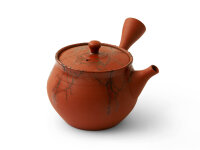
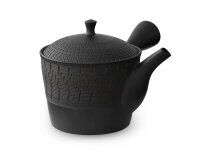
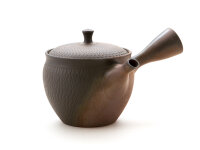
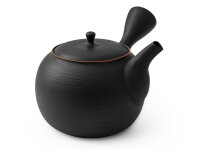
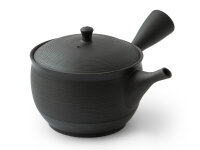
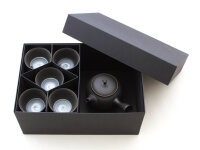
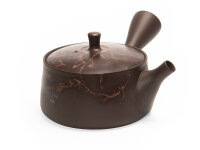
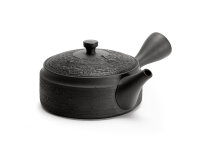
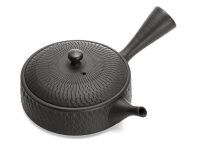
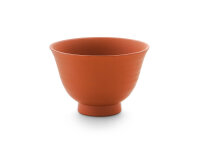











-from-the-yakiyaki-grill-pan.jpg)




